These two types of doughs were my first attempt at making egg and dairy free doughnuts for allergy kid yesterday. The base for these were taken from a recipe using baking powder kindly sent by Andrew using mash potato. Doughnut recipes whether they’re a yeast version or use baking powder contain eggs normally, eggs in dough softens the dough. Andrew’s idea behind using mash potato was to act as softener as I was trying to make dough without eggs, it’s not only a good idea for that but potato is also an excellent source of fast food for the yeast, and since using quite a bit of sugar and some fat in the dough both of which would not help the yeast, to my mind I wanted to have something in there to aid it.
Andrew tells me that US recipes for doughnuts quite often use baking powder as the raising agent, where here we see yeast doughnut recipes commonly. I can buy doughnuts sometimes in some supermarkets like Tesco or the Co-op which are both dairy and egg free but I can’t always guarantee the recipe is egg free as in Tesco they also make them using egg.
Doughnuts eaten in the UK are soft yeast doughs that should also feel relatively light, and the best doughnuts for my kids are the ones filled with jam, no jam no doughnuts as far as they’re concerned, which meant this defined the shape of doughnuts I made.
Top photo left: ‘flying sponge’ for yeast dough Top photo right: baking powder dough
Using mash potato in the recipe I decided to make the two versions of doughnuts. The straightforward baking powder recipe, a simple matter of adding everything to the mash and mixing well then rest the dough in the fridge to make it easier to handle the dough, and the yeast version.
Flying Sponge
For the yeast version, the best way to approach it was to do a ‘flying sponge’, it’s a great way to start the yeast multiplying and also to add strength to what might be a delicate dough, because it allows for maximum gluten development in the flour used in the sponge. I remember Paul Merry telling me how the flying sponge was a traditional way for British bakers to speed up and shorten the time of making dough.
A sponge if you don’t know, is mixing flour, water and yeast first and letting it come to the bubbling stage (ripe) before adding the rest of the ingredients, quite often what we consider rich ingredients such as eggs, fat, sugar. The ‘flying’ part in the name refers to the speed, a process that can be done in 1-2hrs as appose to other types of sponge like a poolish which takes longer often overnight to reach the ripe stage.
Both doughs were weighed at 100g per ball.
The first batch deep frying a new recipe for me is always a test batch to figure how hot the oil should be, and inevitably I burn them as I did with these. By the third batch I had figured out the temperature should sit around 180-185˚C, but it wasn’t easy to keep it consistent at that temperature.
Killing the yeast frying doughnuts and poaching bagels
If the temperature was above 195˚C, it killed the yeast straightaway, which meant the balls would not puff up to their full potential while cooking in the oil. This reminded me of poaching bagels, although water only goes up to 100˚C, if you have the water on a rolling boil when you drop a bagel in the water they will expand some in the water but then fail to expand further in the oven while baking, you’re essentially stunting its capacity for a full rise.
The yeast doughnuts above as you can see really need to be pinched tightly when shaping as they can have the potential of coming apart while expanding in the oil.
Very clear to see the yeast doughnut below left was a bigger ball than the baking powder version on the right. NO need for guessing which one is going to be lighter.
The doughnuts were rolled in sugar after frying since it’s easier for the sugar to stick while they’re warm, but in my hurry to do this it caused a problem.
It was only after sugaring the balls did I cut a couple open to find they were raw in the middle. I couldn’t put them back in the fryer nor the obvious answer of finishing them in the oven as the outside sugar would burn.
What cooks from the inside out? Microwave. One minute in the microwave allowing a 2 minutes rest afterwards cooked the centres perfectly.
The conclusion by allergy kid (most importantly) and I was that the yeast doughnuts were lighter and better but we both felt they were heavier than the ones we are use to. This means losing the mash potato in the recipe. I tweeted my experiment live last night including my conclusion and Lynne suggested using potato flour instead, which may be the perfect answer. I use potato flour in the kids’ breakfast loaf and will use it in the next doughnut trial.
Work in progress recipe – don’t use it. (It’s here as secure reminder as I tend to lose recipes I’m working on, usually left on bits of paper in my baking room)
Flying sponge:
- 200g bread flour (Shipton organic no.4)
- 200g water
- 7g yeast
Rest of ingredients:
- 300g bread flour (Shipton organic no.4)
- 100g sugar
- 8g salt
- 160g potato mash
- 1 tsp vanilla extract
- 60g dairy-free margarine melted
- 25g vegetable oil
- 55g Kara milk (could do with 10g less)



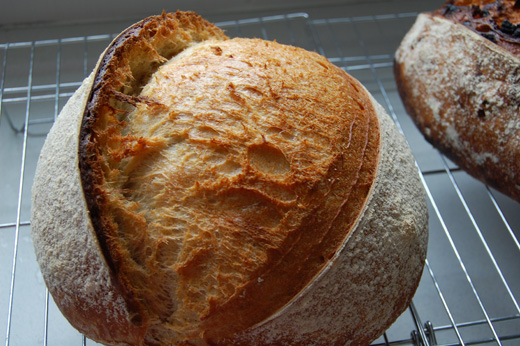

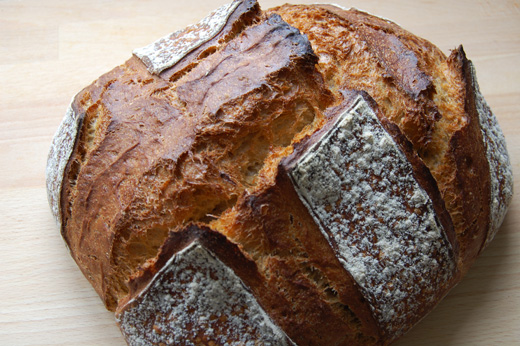



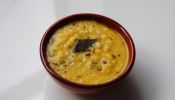


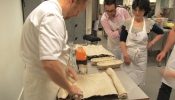














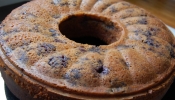


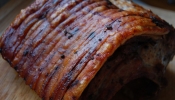

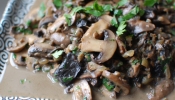

{ 6 comments… read them below or add one }
One thing you might want to consider before dismissing baking powder doughnuts entirely: here in the US, baking powder doughnuts are usually baked instead of fried, although they do still have a different texture from yeast-raised doughnuts. Jelly doughnuts here are ususally yeast doughnuts, but I think they probably use a different recipe from plain iced doughnuts because they tend to have a texture more like an eclair.
Happy New Year, Azelia!
I love the idea of posting a recipe, but saying ‘do not use’! It’s like anti-blogging
They both look delicious. I have sworn off deep-frying at home, although I’ve been tempted back a couple of times using the chip recipe that starts in cold oil. I have a recipe for baked doughnuts as well, but somehow it’s just not the same.
Interesting Dawn – you saying that the jelly doughnuts there (yeast) have a texture like an eclair? I will be trying baked doughnuts and again will make it using bp and yeast. I think the bp version might work better if I wasn’t trying to create an egg/dairy free version.
Happy New Year Louise!
I made the cold oil chips last night for family – using the largest le Creuset pan which is wider than a stockpot I manage to fit enough chips in one go, pretty handy.
Will be attempting the baked version too, have bought baked doughnuts stuffed with apple puree that I liked some time back, would be a nice one to try.